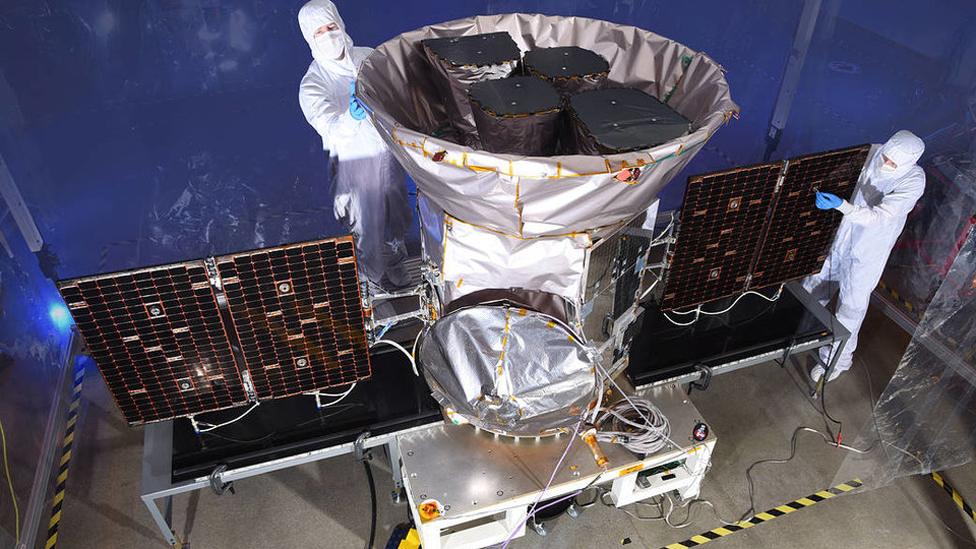Delay for Nasa's Tess planet-hunter
- Published

Tess's four-camera system will search about 85% of the sky during its primary mission
The launch of Nasa's Tess planet-hunter has been postponed and it will not now lift off until Wednesday at the earliest.
The telescope was due to go up from Cape Canaveral in Florida at 18:32 local time on a SpaceX Falcon 9 rocket.
But the flight was stood down some three hours before lift-off.
SpaceX said it wanted some additional time to understand an issue related to the guidance, navigation and control of its vehicle.
The company added that its teams were now working towards an 18 April launch at 18:51 EDT (2351 BST).
The BBC understands that scientists on the mission also want a delay so they can run some extra checks on the Transiting Exoplanet Survey Satellite itself.
When Tess does get up, it will stare at stars for weeks at a time, hoping to catch the dips in brightness that occur when orbiting worlds traverse their faces.
The expectation is that it could identify some 2,000-3,000 planets in its first two years of operation.
The satellite, which carries four camera-detectors, will essentially compile a catalogue that other telescopes - both on the ground and in space - can then focus in on for more detailed analysis.
"Think of it as a phone book; you'll be able to look up the ones that interest you," said Sara Seager from the Massachusetts Institute of Technology (MIT), which leads the Tess project.
"But it's not just quantity; it's quality as well - because the planets we do find will be bright enough and close enough to Earth that we really can do follow-up measurements with them."
Sara Seager: "Tess will orbit in a giant ellipse that goes far away from Earth"
Perhaps the key actor in this future study will be the successor to Hubble - the James Webb space observatory, due in orbit from 2020.
It promises an ability to resolve the atmospheres of some of the new worlds, to look for gases that might hint at the presence of life.
James Webb will "tease out the chemical compositions of those atmospheres and look for whatever's there," said Paul Hertz, the astrophysics director at Nasa. "People are very interested in looking for, what on Earth, are bio-signatures, such as methane, carbon dioxide, water vapour and oxygen."
Bill Chaplin is an astroseismologist from Birmingham University, UK. He is interested in the variations in brightness of the stars that will be observed by Tess.
This variability is a consequence of resonances in the stars' outer layers, and it allows the British professor to pull out a lot of extra information.
"We can measure the stars' fundamental properties. We can say how massive they are and how old they are. In addition, we can form a picture of what the inside of a star looks like. So, in essence we can do the equivalent of an ultrasound scan on them."
Why Tess is recording the "sounds of stars"
Jonathan.Amos-INTERNET@bbc.co.uk, external and follow me on Twitter: @BBCAmos, external